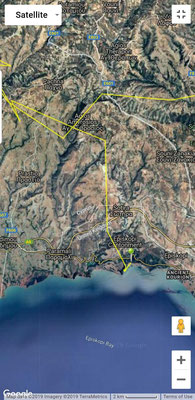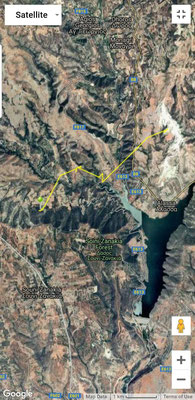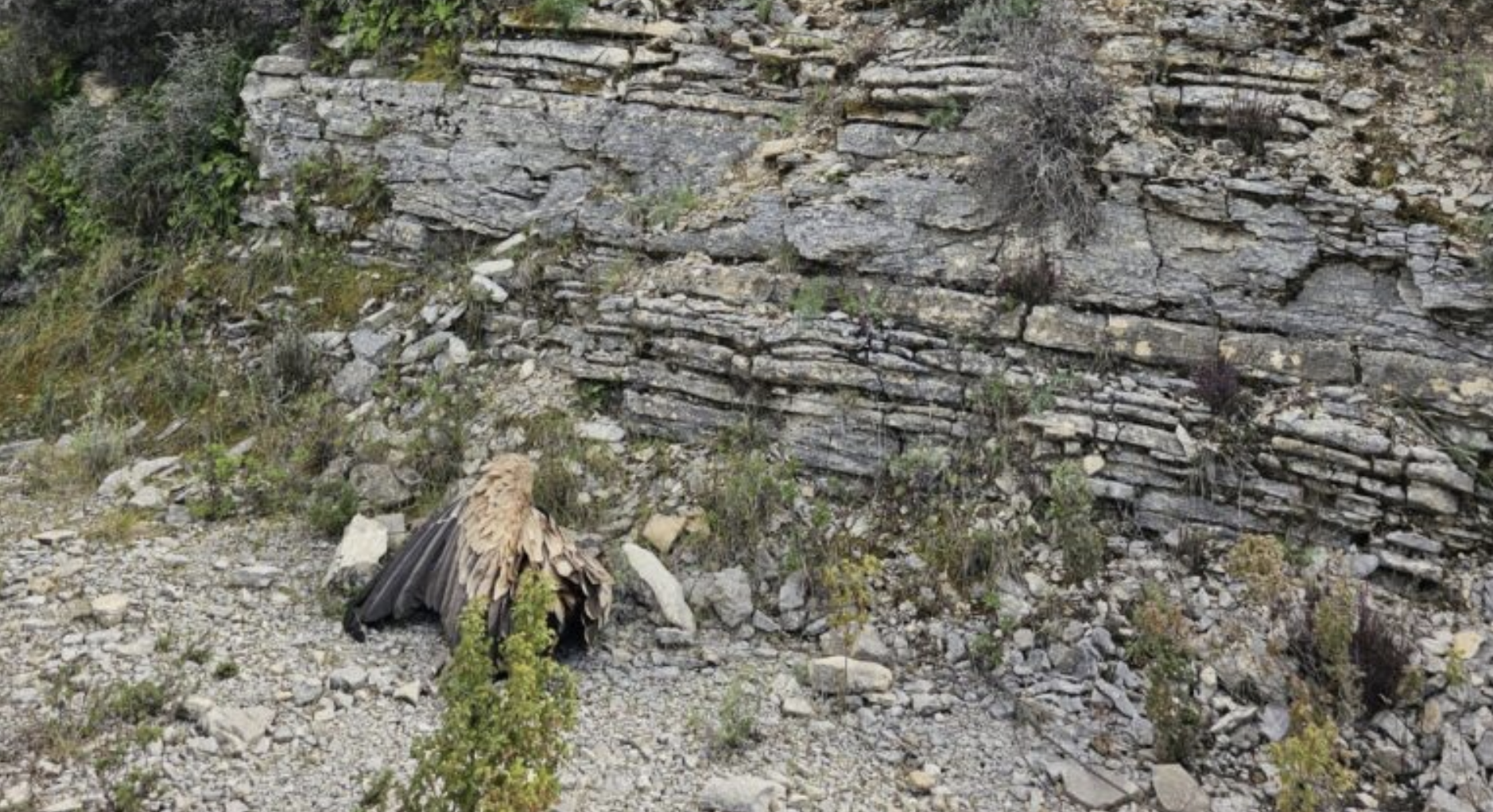
Last month, a young Griffon Vulture was stranded on a rocky beach at Episkopi Bay in Cyprus and was found in distress and unable to fly. But thanks to BirdLife Cyprus, Game and Fauna Service and the SBA Environmental Department, the vulture was rescued in time! After spending one month in recovery at the Game and Fauna Service Rehabilitation Centre, the vulture is almost ready for release.
Ahead of its release
(c) Vulture Conservation Foundation
On Friday 11 October, the Griffon Vulture was transferred from the Rehabilitation Centre to the Game and Fauna Service’s acclimatisation aviary in Limnatis. Ahead of its release in the aviary, the bird was examined and it weighed around 7 kg. The bird was then ringed and equipped with a GPS transmitter provided by us here at the Vulture Conservation Foundation. The transmitter will help monitor its movements, which will provide important information for the protection of the already diminished Griffon Vulture population in Cyprus. The bird was then released in the aviary where it will be provided with food until its ready to return to nature. The aviary is next to a feeding station, which is often visited by the other Griffon Vultures situated on the island, with two of them flying above us during the release.

After the release, two major television networks in Cyprus interviewed representatives from BirdLife Cyprus and the Game and Fauna Service to help raise awareness about the Griffon Vulture population and the upcoming ‘LIFE with vultures CY’ project.
Update 15/11/2019
The vulture was just named Nepheli was successfully released! On the 15th of November, after spending more than a month in the acclimatisation aviary of the Game and Fauna Service, the young vulture returned to nature! An older Griffon Vulture, probably 2-3 years old, was also caught on the 1st of November in the aviary to be released alongside the young vulture. Both vultures were tagged with GPS transmitters provided by us here at the VCF to monitor their movements.
Now, thanks to the transmitters, we know that the young vulture successfully found the colony and not only that – Nepheli is together with the older vulture!
Griffon Vultures in Cyprus

During the 1960s, the population consisted of at least 100 individuals. Numbers declined rapidly since then, with an estimated 20 pairs by the early 1990s and just 8 – 10 pairs by the turn of the century. Today, the Griffon Vulture is in the brink of extinction from Cyprus with only around 20 birds remaining. The main reason behind the decrease has been the reduction in food availability due to the reduction in extensive livestock farming (free grazing) – as Griffon Vultures feed exclusively on dead animals. For this reason, another critical threat to the species is poisoning from the illegal use of poisoned baits aimed at the extermination of foxes and stray dogs.
So, the rescue of even one bird as in this case is of crucial importance. Any loss is a severe blow to the survival of the species in Cyprus, and there is no longer room for losses.
LIFE with Vultures CY
This collaboration and rescue was a great way to begin the upcoming ‘LIFE with Vultures CY’ project, which aims to preserve the species on the island. To protect the Griffon Vulture population in Cyprus, BirdLife Cyprus, in cooperation with Game and Fauna Service, Terra Cypria and us here at the Vulture Conservation Foundation, will soon implement this conservation project, funded by the EU’s LIFE Programme. The project “Saving Griffon Vultures in Cyprus through concrete conservation actions” will address the main threats the species face such as poisoning, lack of safe food, collisions with power lines and restock the Griffon Vulture population to the island by transporting birds from Spain.












